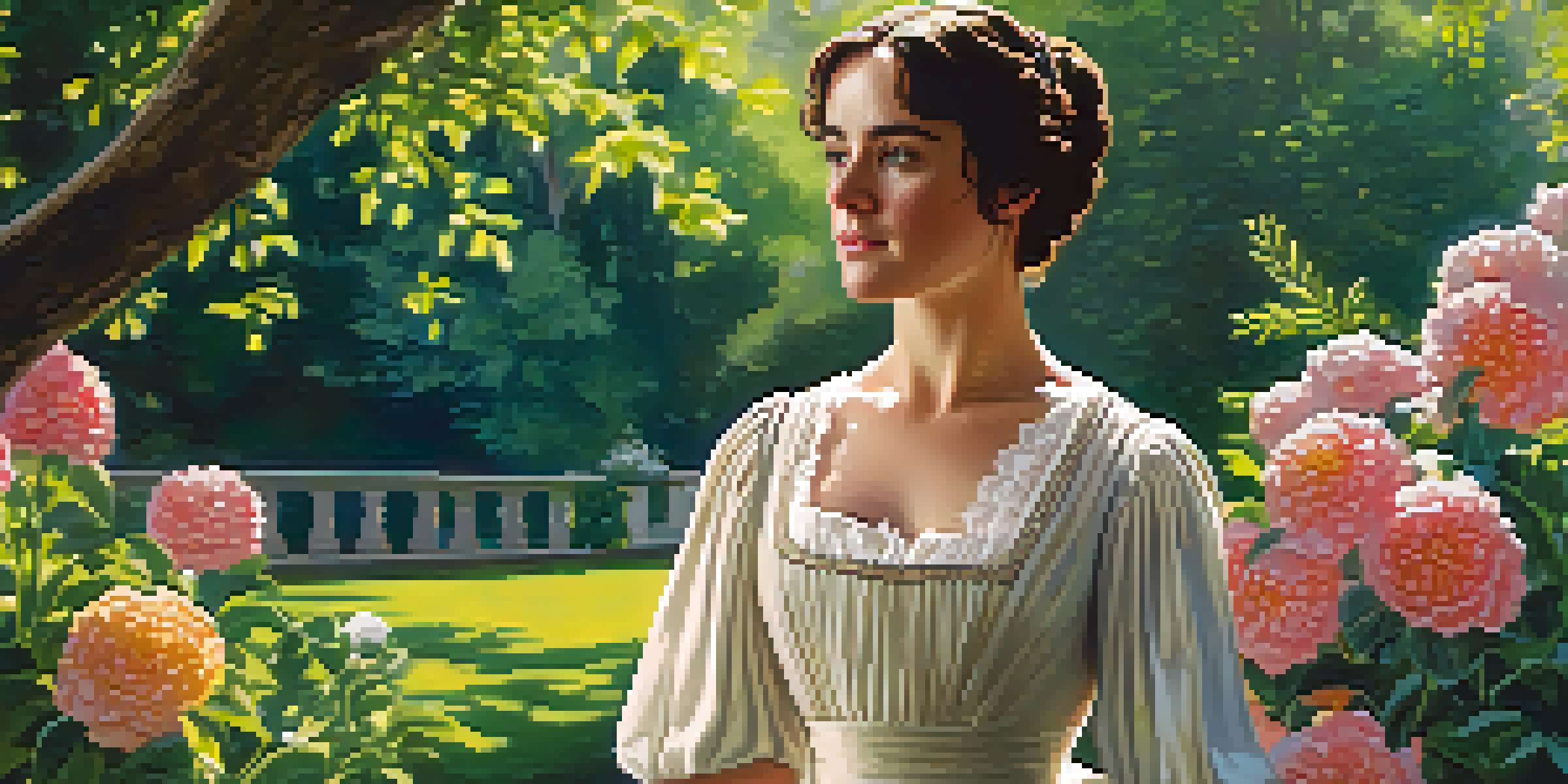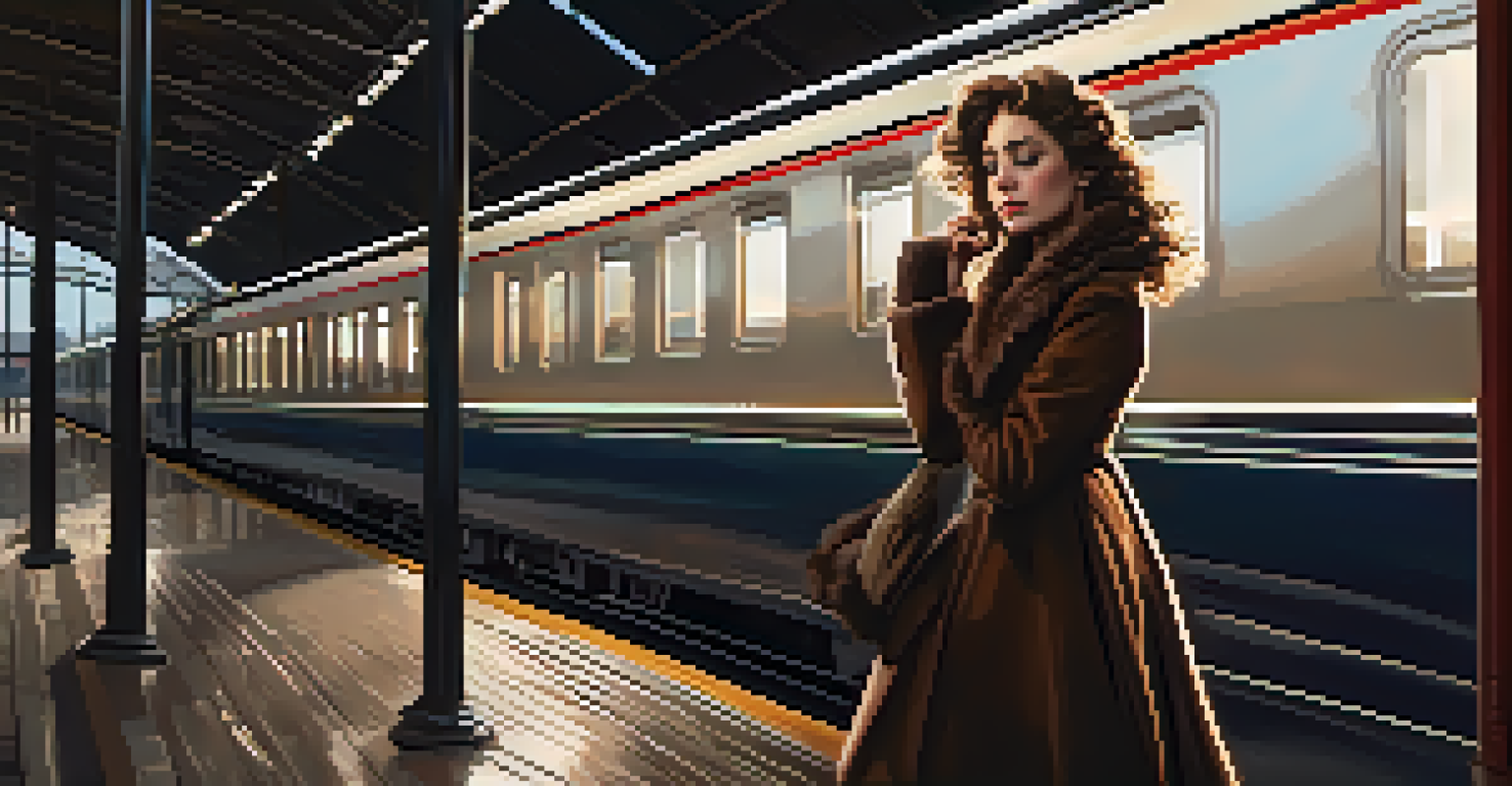Artistic Representations of Literary Characters in Paintings

The Intersection of Literature and Visual Arts
Art and literature have long been intertwined, each influencing the other. When artists read novels or poems, they often visualize the characters and settings, translating words into vivid imagery. This creative exchange enriches both forms of expression, allowing readers and viewers to experience stories in new dimensions.
Art is the most beautiful of all lies.
For instance, think about how a powerful description of a character can ignite an artist's imagination. The portrayal of characters from classic novels like 'Pride and Prejudice' or 'Moby Dick' in paintings or illustrations opens up a dialogue between the written word and visual representation. Each stroke of the brush tells a story, inviting the viewer to explore the deeper themes within the text.
Thus, artistic representations serve not only as illustrations but as interpretations of literary works. They can highlight emotions, settings, and themes that readers might overlook, fostering a deeper understanding of the narrative.
Famous Literary Characters Brought to Life
Many iconic literary characters have been immortalized in paintings, allowing us to visualize them in ways the text may not fully convey. Characters like Jay Gatsby from 'The Great Gatsby' or Elizabeth Bennet from 'Pride and Prejudice' have sparked the imaginations of countless artists. These portrayals often reflect the cultural and historical context of the time they were created, adding layers of meaning to the characters.

Take, for example, the various representations of Sherlock Holmes. From the classic illustrations by Sidney Paget to modern interpretations, each artist brings their unique perspective to the character. This variety enriches our understanding and appreciation of Holmes' detective persona, showcasing different aspects of his character through art.
Art and Literature's Mutual Influence
Art and literature continuously inspire each other, enriching the storytelling experience through visual interpretations of literary works.
These artistic renditions not only celebrate the characters but also encourage discussions about their roles and significance in literature. They prompt viewers to consider how these figures resonate with contemporary themes and issues, bridging the gap between past and present.
Symbolism in Artistic Representations
Symbolism plays a crucial role in how literary characters are depicted in art. Artists often use colors, objects, and settings to convey deeper meanings associated with these characters. For instance, a dark palette might symbolize a character's inner turmoil, while bright colors could represent hope or joy.
Literature is a way of life, and art is a way of seeing that life.
Consider the portrayal of Dorian Gray in Oscar Wilde's 'The Picture of Dorian Gray.' Many artists depict him surrounded by opulence and decadence, using lavish colors and luxurious settings to reflect his hedonistic lifestyle. This visual representation enhances the reader's understanding of his complex character and moral dilemmas.
By dissecting the symbolism in these artworks, viewers can gain insights into the characters' journeys and the themes of their respective narratives. It encourages a richer interpretation of the stories we thought we knew.
The Role of Context in Artistic Depictions
The time period and cultural context in which a painting is created can greatly influence how literary characters are depicted. Artists may reflect contemporary societal norms, values, and struggles through their interpretations, offering a lens into the past. For instance, a character from a Victorian novel might be portrayed with different stylistic choices than one from the modern era.
This is evident in the varying representations of characters like Jane Eyre. In the 19th century, artists focused on her moral strength and independence, often depicting her in subdued colors and settings. In contrast, modern interpretations may highlight her emotional depth and complexity through bolder colors and dynamic compositions.
Symbolism Enhances Character Depth
Artistic representations often employ symbolism to convey deeper meanings of literary characters, allowing for richer interpretations of their journeys.
Understanding these contexts allows us to appreciate the evolution of literary characters over time. It highlights how society's perceptions of these characters have changed, reflecting broader cultural shifts.
Art as a Medium for Character Exploration
Art provides a unique medium for exploring literary characters, allowing artists to delve into their emotions and experiences. Through visual representation, artists can capture moments of vulnerability, strength, or conflict that words alone may struggle to convey. This exploration not only enriches our understanding of the characters but also invites audiences to connect with them on a personal level.
For example, a painting depicting the tragic moment of Anna Karenina's decision can evoke powerful emotions that resonate with viewers. The artist may choose to emphasize her isolation or despair through expressive brushwork and color choices, creating a visceral experience for the audience.
Ultimately, these artistic explorations encourage conversations about the characters' motivations and the themes of the stories they inhabit. They invite viewers to reflect on their own experiences and emotions, creating a shared understanding of the human condition.
Collaborative Projects: Literature Meets Art
Collaborative projects that fuse literature and art have become increasingly popular, creating unique interpretations of literary characters. Events such as art exhibitions inspired by specific novels or character-driven art challenges allow artists and writers to engage with each other's work deeply. These collaborations highlight the synergy between the two forms of expression.
An example of this is the 'Insecure' art exhibit, where local artists created works inspired by the characters and themes of the show. This not only showcased the artists' talents but also fostered a community dialogue about the narratives and characters that resonated with them.
Future of Art in Literary Exploration
Advancements in technology are transforming how literary characters are depicted in art, engaging new audiences and encouraging fresh perspectives.
Through these collaborative efforts, audiences are treated to fresh perspectives on beloved characters, encouraging them to re-examine the literature that inspired the art. It opens up a new avenue for storytelling and artistic expression.
The Future of Literary Character Representations in Art
As technology advances, the ways in which literary characters are represented in art are also evolving. Digital art, virtual reality, and interactive installations offer new platforms for exploring these characters. This not only broadens the scope of artistic expression but also engages younger audiences in innovative ways.
For example, augmented reality applications allow users to experience literary characters in immersive environments, providing a fresh take on classic stories. This modern approach can spark interest in the original literature, encouraging new generations to explore the texts that inspired these creative interpretations.

Looking ahead, the relationship between literature and art will likely continue to flourish, fostering a dynamic exchange of ideas and inspiration. As artists and writers experiment with new mediums, we can expect even more captivating representations of literary characters that challenge our perceptions and invite us to engage with the stories we cherish.